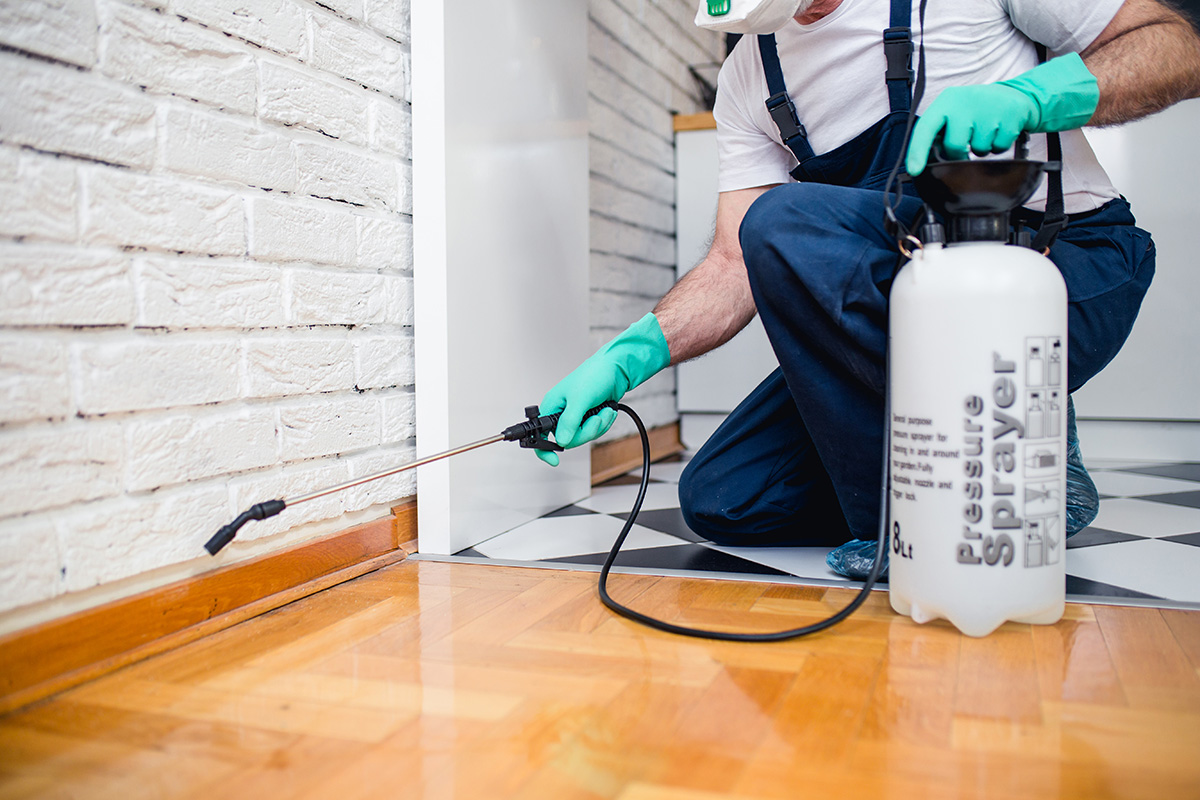A1 Charlotte Pest Control Companies - Your Neighborhood Pest Professionals
A1 Charlotte Pest Control Companies - Your Neighborhood Pest Professionals
Blog Article
Bed Bug Therapy Break Down: Contrasting Chemical Vs. Non-Chemical Solutions
In the world of pest control, particularly when dealing with the persistent problem of bed pests, the choice between chemical and non-chemical therapy remedies can be a pivotal one. Both techniques offer unique benefits and downsides, affecting variables such as efficiency, security factors to consider, and total price. By checking out the nuanced details of each technique, a clearer understanding of which path to go after in attending to a bed pest invasion can be achieved.
Performance of Chemical Treatments
Chemical treatments for bed bug infestations have actually been extensively acknowledged for their fast and potent efficacy in eliminating these insects. When thinking about the effectiveness of chemical therapies, it is vital to recognize that they can offer a quick and thorough service to a bed pest problem.
Additionally, chemical therapies have the advantage of using residual results, implying that they can continue to remove bed bugs also after the preliminary application. This residual activity is especially advantageous in combating any prospective re-infestations. In addition, the rapid action of chemical therapies can bring alleviation to people facing serious bed pest infestations, permitting them to gain back control of their space promptly.
Security Concerns With Chemical Solutions
When utilizing chemical solutions for bed pest treatment is ensuring the safety of occupants and the environment,One essential element that needs cautious consideration. While chemical treatments can be effective in removing bed insects, they may pose threats if not handled properly. Among the main safety issues with chemical services is the potential injury they can create to human wellness. Direct exposure to particular chemicals utilized in bed insect treatments can result in respiratory system problems, skin inflammation, or other adverse reactions, specifically in people with pre-existing conditions or level of sensitivities. Additionally, improper application or dose of chemical pesticides can lead to toxic residues remaining in the treated location, positioning long-term health risks to residents.
Additionally, the ecological influence of chemical solutions is one more substantial consideration. Some chemicals utilized in bed pest therapies may be unsafe to helpful bugs, wild animals, and communities if they seep right into the dirt or water supply. It is vital to make use of chemical therapies deliberately, adhering to safety and security guidelines, and taking into consideration less harmful alternatives to reduce these dangers and make certain the safe and efficient management of bed insect infestations.
Advantages of Non-Chemical Methods
Considering the possible security concerns and ecological impact associated with chemical remedies for bed insect therapy, checking out non-chemical approaches offers an appealing alternative with numerous distinct benefits. Non-chemical treatments are eco friendly, as they do not add to air or water air pollution, making them a sustainable selection for insect control.
Additionally, non-chemical options can be reliable in targeting bed bugs, consisting of hard-to-reach locations where chemical treatments might not penetrate. Techniques such as warmth therapy, vacuuming, heavy steam cleansing, and mattress coverings offer extensive eradication without the usage of damaging chemicals. Additionally, non-chemical methods can be much less turbulent, requiring minimal prep work and enabling for quicker reentry right into treated locations. Generally, choosing non-chemical bed bug treatment techniques not only biological pest control focuses on safety and security getting rid of fleas and environmental management but additionally guarantees reliable and comprehensive insect control.
Limitations of Non-Chemical Treatments

Furthermore, non-chemical therapies frequently need numerous applications to attain effective removal. This can be lengthy and might not constantly guarantee total removal of all bed bugs and their eggs, especially in covert or hard-to-reach places.
Furthermore, the success of non-chemical treatments heavily depends on appropriate execution and thoroughness, which can be challenging for individuals without expert competence. Poor application of non-chemical approaches may lead to insufficient elimination, bring about relentless infestations and the demand for added therapies.
Consequently, while non-chemical therapies have their benefits, it is necessary to acknowledge these restrictions and consider them when establishing one of the most reliable approach for managing bed bug problems.
Price Contrast: Chemical Vs. Non-Chemical Options
Given the restrictions related to non-chemical treatments, a vital aspect to review in the context of bed insect monitoring is the price contrast between chemical and non-chemical options. Chemical treatments usually involve the application of pesticides by specialists, which can vary from $250 to $900 per area, relying on the intensity of the invasion and the size of the location to be dealt with. In comparison, non-chemical treatments like warmth therapy or steam can be more pricey, with expenses ranging from $1,000 to $6,000 for a whole home. While the preliminary expense of chemical therapies may seem reduced, numerous therapies might be called for to totally eradicate the problem, potentially enhancing the general price. On the various other hand, non-chemical options might offer a more eco-friendly and lasting option, although they can be cost-prohibitive for some individuals. Eventually, when thinking about the price of bed insect therapy choices, it is crucial to evaluate the upfront costs versus the efficiency and lasting sustainability of the picked approach.
Final Thought

Thinking about the possible safety issues and environmental effect associated with chemical remedies for bed pest therapy, discovering non-chemical approaches offers an appealing alternative with several unique benefits.Provided the limitations linked with non-chemical therapies, a vital facet to review in the context of bed pest administration is the price contrast in between chemical and non-chemical alternatives. In comparison, non-chemical therapies like heat treatment or heavy steam can be much more costly, with expenses ranging from $1,000 to $6,000 for an entire home. While the initial price of chemical treatments may appear reduced, several therapies may be called for to completely remove the problem, possibly boosting the general expense.In conclusion, when comparing chemical and non-chemical bed insect treatment options, it is vital to think about performance, safety, advantages, constraints, and price.
Report this page